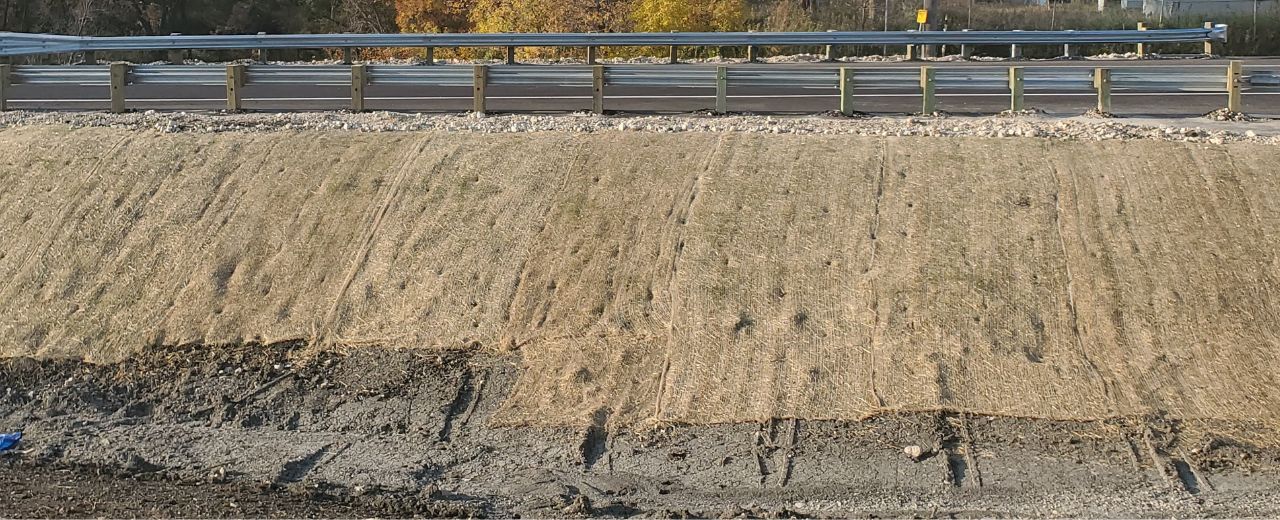Exact Solutions from Memphis Erosion Control Solutions trenching
Wiki Article
Finest Practices for Disintegration Control in Building And Construction Projects
Are you working on a building job and worried concerning disintegration control? Look no further! In this short article, we will assist you via the ideal techniques for preventing erosion on your site. You'll discover five vital strategies, effective sediment and runoff management techniques, essential considerations for slope stabilization, and suggestions for safeguarding plants and dirt. We'll additionally dive right into the relevance of applying proper water drainage systems. Get ready to tackle erosion head-on and guarantee the success of your building and construction job.5 Important Disintegration Control Methods

To properly regulate disintegration on your building and construction website, you'll require to implement important techniques such as slope stabilization and sediment control measures. Slope stabilization is crucial in preventing soil erosion on high inclines. An additional reliable method is the use of erosion control blankets or floor coverings, which are positioned on the incline and assistance maintain soil particles while allowing vegetation to expand.
Reliable Debris and Runoff Monitoring

You can effectively take care of debris and runoff in your construction task by executing correct erosion control steps. Another crucial practice is the execution of erosion control coverings or mats. By implementing these disintegration control measures, you can successfully manage sediment and drainage in your building and construction task, decreasing the impact on the atmosphere and complying with regulatory requirements.
Secret Considerations for Slope Stabilization
You require to thoroughly analyze the incline's attributes, such as its composition, drain, and angle patterns. Look for indications of disintegration, such as exposed origins, cracks, or slumping soil.One more choice is to grow plants on the incline, as the roots can help anchor the dirt and control erosion. In addition, setting up erosion control blankets or mats can give prompt protection while greenery comes to be well established.
It's vital to on a regular basis keep track of the supported slopes to guarantee their effectiveness. Maintain an eye out for any type of signs of activity or erosion, and take prompt action if essential. Routine upkeep, such as checking and repairing any type of damaged steps, is also important to ensure long-lasting stability.
Ideal Practices for Vegetation and Dirt Defense
If essential,One effective means to secure plant life and soil on slopes is by consistently checking for indicators of erosion and taking immediate activity. By being proactive and watchful, you can avoid more damages and guarantee the security of the incline. Beginning by inspecting the slope for any type of signs of erosion, such as exposed roots, bare soil patches, or sediment build-up near the bottom. If you notice any of these signs, it is important to attend to the problem quickly. Implement erosion control steps such as installing disintegration control blankets, mulching, or perhaps constructing retaining wall surfaces if required. In addition, growing plant life can dramatically aid in maintaining the dirt. Choose native plants that have deep root systems, as they are more reliable in preventing erosion. Make sure to frequently evaluate the health of the vegetation and give necessary upkeep, like watering and fertilizing. Remember, disintegration can swiftly intensify more tips here and create extreme damage, so it's important to address it immediately. By taking aggressive procedures and on a regular basis keeping an eye on the slope, you can protect the greenery and soil, making certain the long-lasting stability of the location.Implementing Appropriate Water Drainage Systems
To successfully implement appropriate water drainage systems, it's essential to take into consideration the slope gradient and soil kind. Comprehending these variables is important when it comes to handling look here water circulation and preventing erosion. The incline gradient plays a significant role in figuring out just how water moves across the land. Steeper inclines can bring about faster water flow, enhancing the danger of disintegration and flooding. On the various other hand, gentler inclines allow water to flow much more slowly, minimizing disintegration possibility. By analyzing the incline gradient, you can make an effective drainage system that accommodates the natural water movement.Soil kind additionally influences drainage system design. Various soil types have varying levels of leaks in the structure, influencing just how water is soaked up and drained. For instance, sandy soils often tend to drain pipes faster because of their coarse appearance, while clay dirts have a slower drain rate as a result of their compact nature. Understanding the dirt kind helps in picking proper drain techniques, such as making use of permeable materials or setting up French drains. In addition, taking into consideration the soil characteristics aids avoid waterlogging, which can lead to inadequate plant growth and damages to structures.
Final Thought
In final thought, when it comes to disintegration control in building jobs, you need to adhere to these finest methods. Think about slope stablizing techniques to guarantee the stability of the site. By following these important practices, you can effectively control disintegration and make certain the success of your building and construction task.To properly regulate disintegration on your building Get More Information site, you'll need to implement essential techniques such as incline stablizing and debris control steps. Slope stablizing is critical in protecting against soil disintegration on steep slopes. An additional reliable method is the use of disintegration control coverings or mats, which are positioned on the incline and help retain dirt bits while allowing plant life to grow. Another alternative is to plant vegetation on the incline, as the roots can aid anchor the soil and control disintegration. Implement erosion control measures such as setting up erosion control coverings, mulching, or also constructing keeping wall surfaces if required.
Report this wiki page